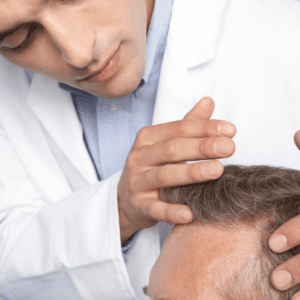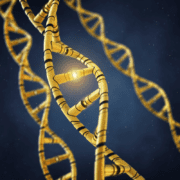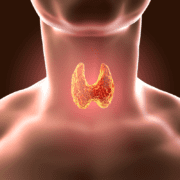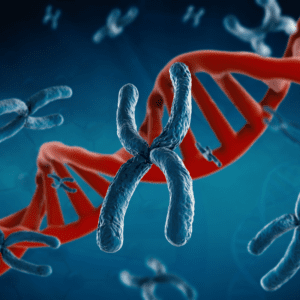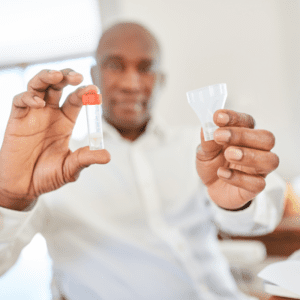Hair Loss: A Global Problem
Hair loss is a very common problem that affects both men and women. Recently, personalised hair care solutions are emerging as the most efficient tool to manage hair loss risk whether it’s a genetic risk or a poor lifestyle.
Men get more affected by pattern hair loss also known as Androgenic Alopecia as compared to females. It can be caused by a number of factors, including genetic predisposition, certain medical conditions, and even stress. Losing your hair can be a very emotionally distressing experience, as it can impact your self-confidence levels significantly. If you are struggling with hair loss, it is important to remember that you are not alone. There are a number of effective treatments available that can help you to reverse androgenic alopecia.
Pattern Hair Loss: A First Indicator To Baldness
Male and female pattern hair loss (MPHL & FPHL) is the most common form of hair loss in both men and women. MPHL is characterized by a receding hairline and thinning hair on the crown of the head. In men, this can eventually lead to total or near-total baldness. In women, FPHL typically results in thinning hair on the top of the head. MPHL is caused by a combination of genetic and hormonal factors.
Males have 2 common hair loss patterns:
– Androgenetic alopecia (AGA) (Common for both males and females)
– Alopecia Areata (AA) (Common for both males and females)
Whereas, females have 2 additional categories of pattern hair loss, mainly due to their constant hormonal changes:
– Telogen Effluvium (Only in females)
– Frontal Fibrosing Alopecia (FFA) (Only in females)
Know About Common Factors Leading To Hair Loss
Gene Variations Impact Your Hair Loss Risk
Recent studies have begun to unravel the complex genetic factors that contribute to hair loss. To date, more than 300 genes have been identified as playing a role in the hair growth cycle and regulation of essential proteins for hair growth. Of these, variations in the androgen receptor (AR) gene are the most widely studied.
A recent study of Japanese, UK, and US populations found that individuals with a negative version of the AR gene had significantly more hair shedding and visible bald patches than those with a typical genetic marker for this gene. This provides concrete evidence of the role genes play in hair loss.
A Hair DNA test is the most efficient method to know an individual genetic hair loss risk. A Hair DNA test is the most efficient method to know an individual genetic hair loss risk. The results of this test give individuals a much better insight into the cause of their hair loss and can help them make informed decisions on the best course of treatment.
Hair DNA Test Helps You To Mitigate Genetic Hair Loss Risk
A DNA test can help you to find out if you have a genetic predisposition for hair loss. If you do, you can take steps to mitigate your risk by following a treatment plan prescribed by a hair loss specialist. Sometimes, lifestyle changes such as switching to a healthier diet or hair product may also be recommended. If you are concerned about hair loss, a DNA test can provide valuable information about your risk factors. By working with a hair loss specialist, you can develop a treatment plan that is tailored to your individual needs and may help to prevent or slow the progression of hair loss.
Personalised Hair Care Solution: It’s Science & Methodology
A personalised hair care DNA test is a simple, straightforward procedure. An individual collects a saliva sample and mails it to a company or laboratory for testing. The data analysis then takes place to determine the results of the test. This process is simple and easy to follow, making it a great option for those looking to get reliable results without any hassle.
Let’s have a detailed insight:
1. Sample Collection
It is important to follow the instructions provided by the laboratory or company when collecting your saliva sample. This will ensure that your sample is of high quality and can be used for accurate analysis. Once collected you can ship the sample directly to the company.
2. Genetic Data Analysis & Report generation
Bioinformatics experts use sophisticated algorithms to detect risk variants. Once these tests are done, the results will be reported under the guidance of health professionals who can help you make sense of it followed by personalized recommendations based on your specific needs.
If you’re concerned about your hair health and want to take proactive steps to ensure long-term locks, HairLife’s personalised haircare solution is for you.
This simple test can help you understand your hair type and the genetic risk of certain hair conditions. Armed with this information, you can work with a professional to create a customized hair care plan that will help you achieve and maintain healthy, strong hair.
In addition to providing valuable insights into your individual hair needs, HairLife’s personalised haircare solution can also help you choose the right products and treatments for your specific hair type. So, whether you’re looking to prevent hair loss, stimulate growth, or simply improve the overall health of your locks, this test is an excellent first step.
If you’re ready to take your hair care to the next level, order the HairLife DNA-based personalised haircare solution today!
Connect with us and let us know how we could assist you.
Please Fill Out This Contact Form To Know More About HairLife’s Personalised Hair Care Solution


